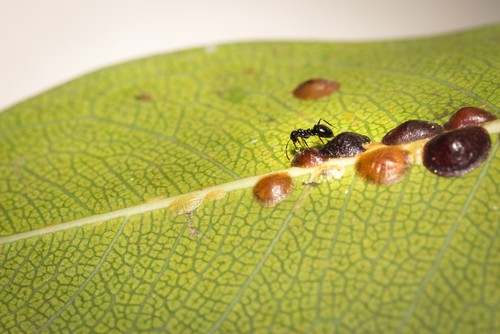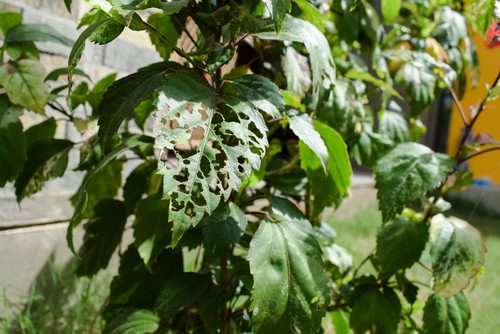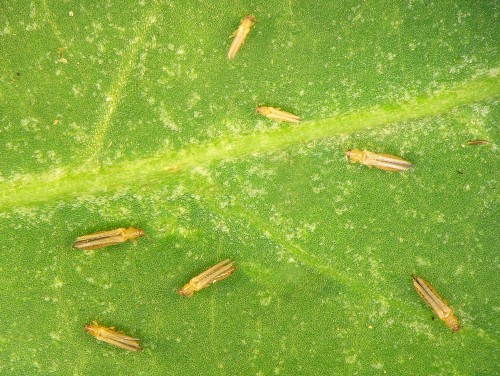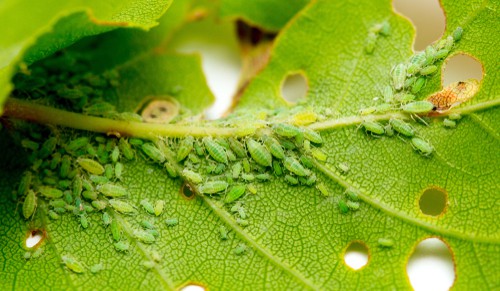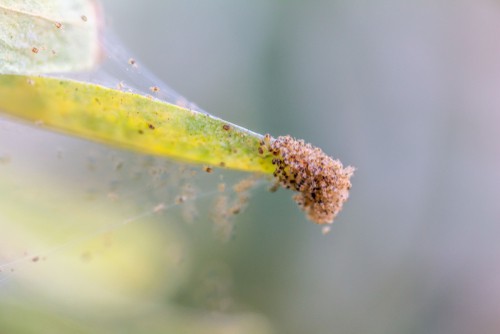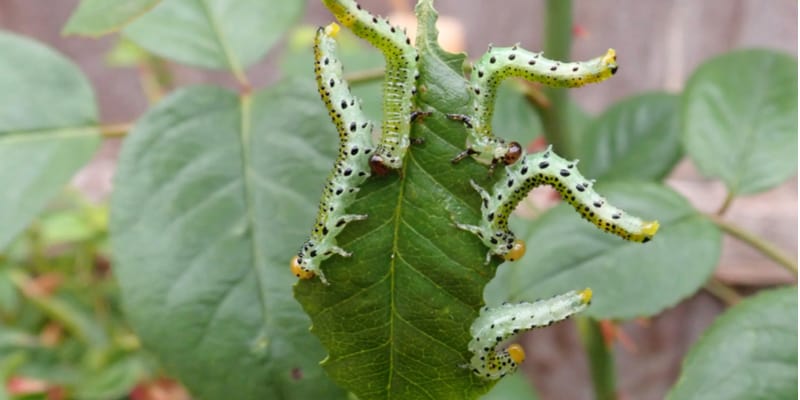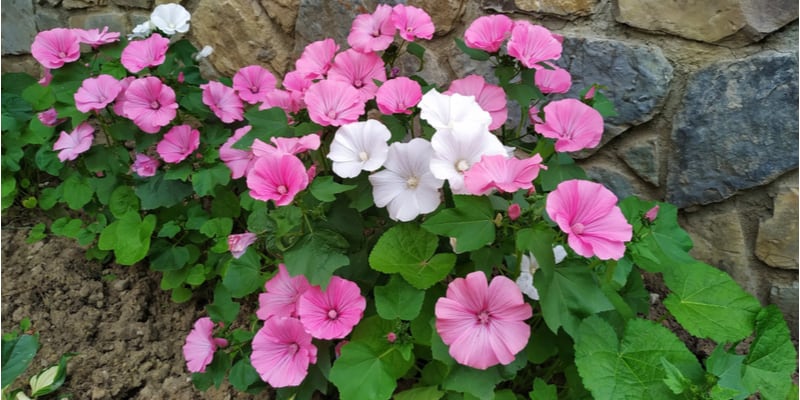
What’s Eating My Lavatera leaves? 8 pests that could be snacking on your Lavatera
Our site is reader supported, this means we may earn a small commission from Amazon and other affiliates when you buy through links on our site.
Unlike diseases, pest attacks on Lavatera shrubs are easily identifiable because the damage shows up on the leaves or the flowers and if you are lucky, you may even see the pest actually snacking on the leaves of your Lavatera.
In the cases of caterpillars and slugs, they leave holes in the leaves themselves, whereas pests such as scales will cause leaf discolouration and eventual defoliation. This is where the leaves actually fall from the plant, leaving it looking very bare.
If you are curious to know what is devouring your Lavatera, have a read through the information below. You will also find some great easy to apply solutions that will prevent further damage to your plants as well as common treatments. These are usually pesticides or a simple soap and water spray mix.
Scale insects – Yellowing of the leaves and a sooty mould appearance on the leaves
Scales are tiny (common bugs) that attack plants both indoors and outdoors. These insects cause damage to the plant as they ingest the sap from the foliage. Scale insects are really tiny insects, so it may be hard to see them unless you look very closely. However, you won’t miss the sooty mould they leave on the leaves. Scales, just like aphids and produces honeydew that then promotes the growth of sooty mould, which further weakens the plant.
While scales live in smaller populations and they will not kill the plant, they affect the plant’s aesthetic appearance. Leaves infested with scales usually discolour and fall out in the end. To keep the plant healthy, employ the use of an organic or chemical control, although organic methods are safer for the environment. A general pesticide labelled as suitable for scale insects will do the job though.
You can also learn what else causes yellowing of the leaves on a Lavatera in my guide here
Caterpillars leave holes in the leaves but will only eat as far as the leaf nerves
Caterpillars eat their way through leaves and buds leaving behind a lot of cosmetic damage. Caterpillars may come from varied species of insects because it is a stage in metamorphosis. Regardless of the species, caterpillars love to eat and if you let them, they will do considerable damage until nothing much is left.
Smaller caterpillars tend to eat the underside of the leaves while larger caterpillars will eat everything, including buds, shoots and fruit.
Remember that plants need leaves to make food and if the leaves are full of holes, they are not working effectively. If the population is big, try to remove them by hand or you can use natural predators such as birds and parasitic wasps or even a pesticide labelled as effective against caterpillars, which usually are most of them.
Thrips often cause streaks, silvery speckling and small white patches on the leaves
Thrips are relatively harmless in small numbers as they will only feed on a few of the leaves. They get their nutrition from the cell content that they suck out of the leaves. This in turn, indirectly invites other small insects, such as ants when they produce honeydew. Apart from attracting insects that feed on honeydew, you will find sooty mould thriving so be sure not to mistake this for scale insects.
Thrips are not lethal on their own but the inclusion of other insects and fungal infections make the plant weak. The use of neem sprays, horticultural soap, pesticides and natural predators will prove effective against these pests.
Aphids cause the foliage to curl and leads to sooty mould
Aphids make a common appearance in most gardens and are probably one of the most common you will see out of all pests. Just like the others above, they are not harmful in small numbers. Aphids consume the sap from the plant too and produce honeydew that then leads to the attraction of more insects to the plants as well as sooty mould.
The combination of these factors may eventually weaken your Lavatera, so take care when you employ control measures. These control measures vary, from using natural predators and neem oil sprays to using recommended pesticides. Personally, I spray with a spray that treats both pests and mildew as this will help to prevent diseases whilst killing the aphids before they get out of control.
Leaf beetles create small holes in the foliage
Another reason why your Lavatera leaves may have holes, as well as eventually discolouring, is down to leaf beetles. These small insects feed on the sap and create holes in the foliage, therefore leaving behind an ill-looking plant. If you can, note the appearance of the beetles because there are over 30,000 different species. By taking note of the beetle’s appearance, you can purchase the right insecticide, that being said, most good pesticides will treat leaf beetles.
Snails and slugs need no introduction, their slime trails give them away
Most people do not think that snails and slugs are dangerous to plants because they are slow and rarely spotted. However, snails and slugs feed on the leaves and their slime trails leave behind cosmetic damage. Leaves with holes do not work optimally; therefore, the plant cannot make enough food to thrive.
Deterring snails and slugs from attacking your plants is easy. Trap them using some slug traps or remove them manually, encouraging hedgehogs into the garden will also help keep on top of the slug population.
If you have Lavatera in pots, you can also use copper tape around the pots to deter them, alternatively, place coarse material at the base of the plant to prevent them from moving around.
Spider mites are usually spotted by the small cobwebs
Spider mites might be another culprit eating your Lavatera only there won’t be glaring holes in the leaves. You might miss spider mites because they are incredibly tiny insects size-wise, but, if you spot small webs on the stems and leaves, you have your confirmation.
Spider mites will not kill your plant but, if you let the population increase, expect yellowing leaves and defoliation. To control spider mites, spray the pest down with clean water or apply a pesticide.
Sawflies can strip a plant of all its leaves
Last on the list are sawflies. These tend to attack the mallow family, together with other plants. Sawflies in the adult stage do not harm the plant; the baby sawflies (that look like caterpillars) are the destructive ones. The larva stage of sawflies sees them eat through leaves and consume plant sap.
You can remove these pests by hand or use organic/chemical pesticides that are friendly to the environment. There is no guarantee that your plant will stay pest free, the most you can do is monitor the plant and mitigate the problem before it escalates.
Learn more about other pests and diseases that can attack Lavatera plants here
